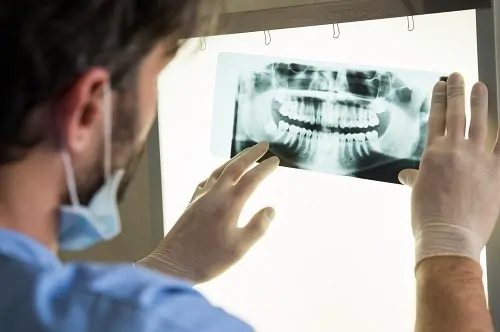Blog
6 Surprising Foods That Can Damage Teeth

At our dental office in Douglasville, you’ll hear us talk a lot about the importance of regular dental cleanings at least every six months as well as having a healthy at-home oral hygiene routine of brushing twice a day and flossing once a day. But besides keeping your teeth clean, there’s another way you can help ensure your mouth stays healthy… and that’s by avoiding foods that can damage teeth.
The Scary Six
-
- Popcorn. Some of the most common food related dental damage comes from popcorn. Although it’s popped and mostly airy, there’s always the risk of hitting the occasional hidden kernel. Popcorn kernels are really hard and if they’re bitten with force, the chance of having a tooth crack or chip is high. The pesky husks can also cause problems by getting wedged deep in the gums. If they’re not removed, an infection may occur.
-
- Olives. Well, the olives themselves aren’t exactly the problem. It’s more about the pit that’s sometimes left in place. Where the real danger comes into play is when you’re unsure if the pit is still stuck in the middle or not. When this is the case, take your time and explore the olives, checking for any potential tooth-cracking pits.
-
- Caramels. Caramels have two dangerous aspects to them: the sugar and the texture. Ooey gooey caramels tend to linger on teeth for a long time, exposing them to damaging sugar until it’s removed. The super sticky texture can also be difficult to tear or chew which may loosen fillings or other restorations.
-
- Ice Cubes. Although they’re refreshing on a hot summer day, ice cubes are meant to cool a drink, not to be chewed. These frozen cubes have an especially hard texture which can also lead to dental damage like large chips or even tiny cracks you may not even notice at first.
-
- Other Frozen Food. Besides ice cubes, other frozen treats, like frozen candy bars for example, can be especially dangerous. They take the worst of both ice cubes (hard) and caramels (chewy and sweet) and put them into one damaging food.
- Breads. We know you’re thinking that bread is soft, so how can this be on the list? And you’d be right that most bread is soft, but there are some types of bread such as baguettes that are extra crispy and can be hard on teeth while ripping, tearing, or chewing it.
If you do happen to sustain some tooth damage by eating any of these top culprits, or perhaps something we haven’t listed, we welcome you to call our Douglasville dental office as soon as possible. The sooner we’re able to diagnose the damage, the quicker and easier treatment will be. Don’t wait, call today.
All About Dental X-Rays

Dental x-rays are a vital diagnostic tool used to properly identify any underlying conditions that may not yet be visible on the surface. At our dental office in Douglasville, we perform dental x-rays only as often as necessary, which can vary from patient to patient depending on their oral needs and health history. We also understand our patients may have questions regarding dental x-rays, and we’d like to answer them so you can make the best informed decisions about your health.
Intraoral & Extraoral
Dental x-rays, or radiographs, are usually separated into two categories — intraoral and extraoral. Intraoral x-rays mainly focus on the details of the teeth themselves. While extraoral x-rays still showcase the teeth, the aim of these photos is to look at the bigger picture of the teeth within the jaw and skull.
A Closer Look at Intraoral X-Rays
We already know that intraoral x-rays focus on teeth. They’re also the most common types of x-rays and can help:
- Find cavities
- Check bone health around teeth
- Detect gum disease
Bitewing x-rays are the most frequently used intraoral x-rays. They allow your dentist in Douglasville to see cavities in between teeth that aren’t yet visible on the surface. The images produced from bitewing x-rays also help keep an eye on the wear and tear of any dental restorations, such as a filling or an implant.
Explore Extraoral X-Rays
Extraoral x-rays are less detailed than intraoral images, but still serve a helpful purpose when it comes to looking at:
- Impacted teeth
- The jaw and teeth relationship
- Growth and development
The most common extraoral x-rays are panoramic x-rays. These images show the entire set of teeth as well the jaws in one photo. Panoramic x-rays are great when looking at tooth development or wisdom teeth eruption and can help identify problems with the jaw (TMJ).
We recommend visiting our Douglasville dental office at least every six months. We may not perform x-rays at every appointment unless it’s necessary, but visits twice a year are recommended so we’re able to catch problems early, making them easier, and often less costly to treat.



